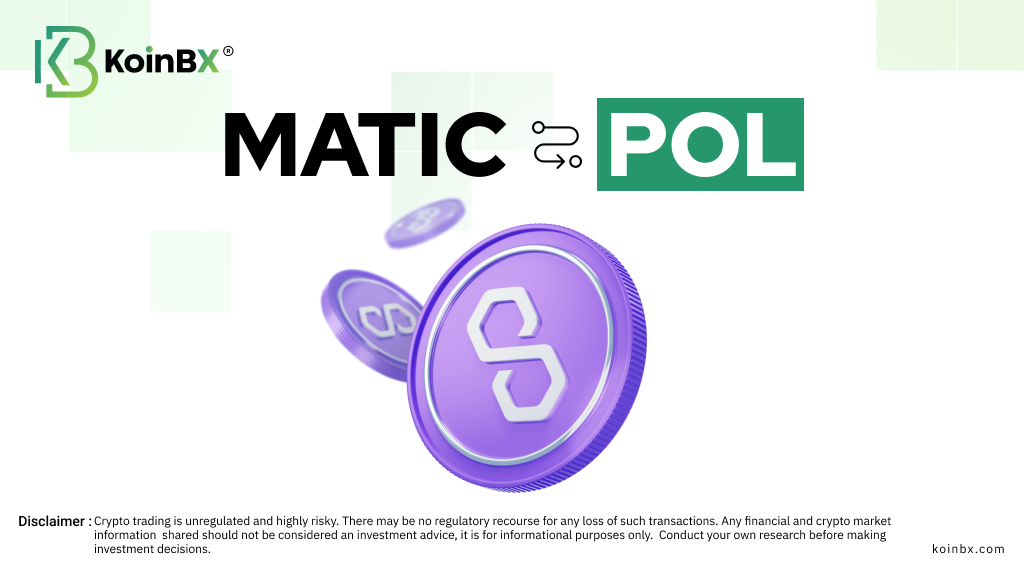Big news is buzzing around Polygon (formerly Matic Network), and we’re here to break it all down for you. Polygon gears up for a significant transformation: the migration from its MATIC token to the new POL token. This change is a pivotal upgrade that reflects Polygon's commitment to enhancing its network's scalability, security, and overall efficiency. As Polygon moves towards its ambitious Polygon 2.0 vision, understanding this migration and its implications is crucial for anyone involved in the crypto space. In this article, we'll delve into what this migration entails, how it will be executed, and why it matters for the future of blockchain technology.
Understanding Polygon’s MATIC to POL Migration
Polygon has been a game-changer in the blockchain universe since its inception. Launched as Matic Network in 2017, it aimed to tackle Ethereum’s scalability issues, and it did just that by offering a layer-2 scaling solution. Fast forward to 2021, and Polygon rebranded to reflect its ambition to be a multi-chain scaling powerhouse.
Now, Polygon is ready for its next big leap: migrating from the MATIC token to POL. This isn’t just a name change; it's a strategic upgrade designed to supercharge the network’s capabilities. The shift to POL is a crucial step in Polygon’s journey to Polygon 2.0, a comprehensive upgrade focused on enhancing security, scalability, and overall user experience.
So, why is Polygon making this move? Simply put, Polygon 2.0 aims to make the network even more robust and versatile. By introducing POL, Polygon is setting the stage for a new era of blockchain technology that promises better performance and greater flexibility for developers, users, and everyone in between.
How Does the MATIC to POL Migration Work?
1. Automatic Conversion: If you hold MATIC tokens, you’ll be pleased to know that your tokens will automatically convert to POL at a 1:1 ratio. No need to worry about manually swapping your assets.
2. Dual Token Phase: Initially, both MATIC and POL will coexist. MATIC will still be used in certain parts of the ecosystem, acting as a wrapper token, while POL will take over as the primary token. This overlap ensures a smooth transition and gives everyone time to adjust.
3. Staking and Governance Updates: POL introduces new, flexible staking options across multiple chains. This means you will be able to stake your POL tokens on different Polygon chains, which should enhance security and decentralize participation. Additionally, POL will offer more robust governance features, giving you a bigger say in network decisions.
4. Developer Prep: If you are a developer, you will need to get your dApps POL-compliant. This means understanding how the new token affects staking and governance functions. Polygon is rolling out updates to ensure a smooth transition for the development community.
5. Migration Timeline: The migration will occur in stages. MATIC will first convert to POL, with both tokens active for a period. Over time, MATIC will be phased out, leaving POL as the sole native token.
Benefits of Migrating from MATIC to POL
1. Enhanced Network Security: POL’s multi-chain staking mechanism means validators can secure multiple chains, reducing the risk of malicious attacks. This strengthens the overall security of the Polygon network.
2. Increased Scalability: Polygon 2.0, powered by POL, is designed to handle more transactions with lower fees and higher throughput. This means smoother and faster transactions, which is a win for everyone involved.
3. Improved Governance: POL introduces a more flexible governance model. Token holders will have greater voting power on critical decisions, which means you will have a bigger say in how the network evolves.
4. Broader Utility: POL is set to be used across all Polygon solutions, including Layer 2 scaling tech, zk-rollups, and cross-chain interoperability. This unified approach simplifies the user experience and boosts efficiency.
5. Better Staking Rewards: The new staking model with POL offers lower entry barriers and higher rewards. It’s designed to be more accessible, making it easier for you to participate in securing the network.
Trade POL/INR and POL/USDT on KoinBX
Final Thoughts
The transition from MATIC to POL marks a transformative milestone for Polygon and the broader blockchain ecosystem. With POL poised to enhance governance, staking flexibility, and network scalability, this migration underscores Polygon's dedication to adapting and thriving in a rapidly evolving industry. For users, developers, and investors, the shift represents an opportunity to engage with a more robust and future-ready network. As we look ahead, the successful integration of POL will undoubtedly set the stage for Polygon's continued innovation and growth.
Stay informed and prepared, as this transition is not just a technical update but a leap towards a more dynamic and interconnected blockchain future.
Download KoinBX Android App | Download KoinBX iOS App
Disclaimer: Any financial and crypto market information shared should not be considered investment advice. It is for informational purposes only. Conduct your own research before making investment decisions. Crypto trading is unregulated and highly risky. There may be no regulatory recourse for any loss of such transactions.






Comments